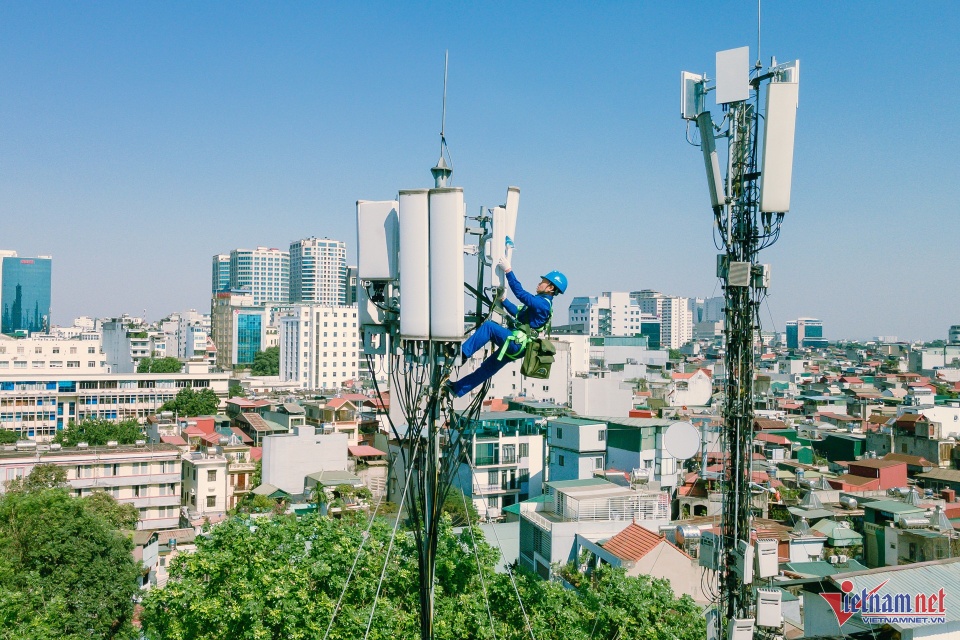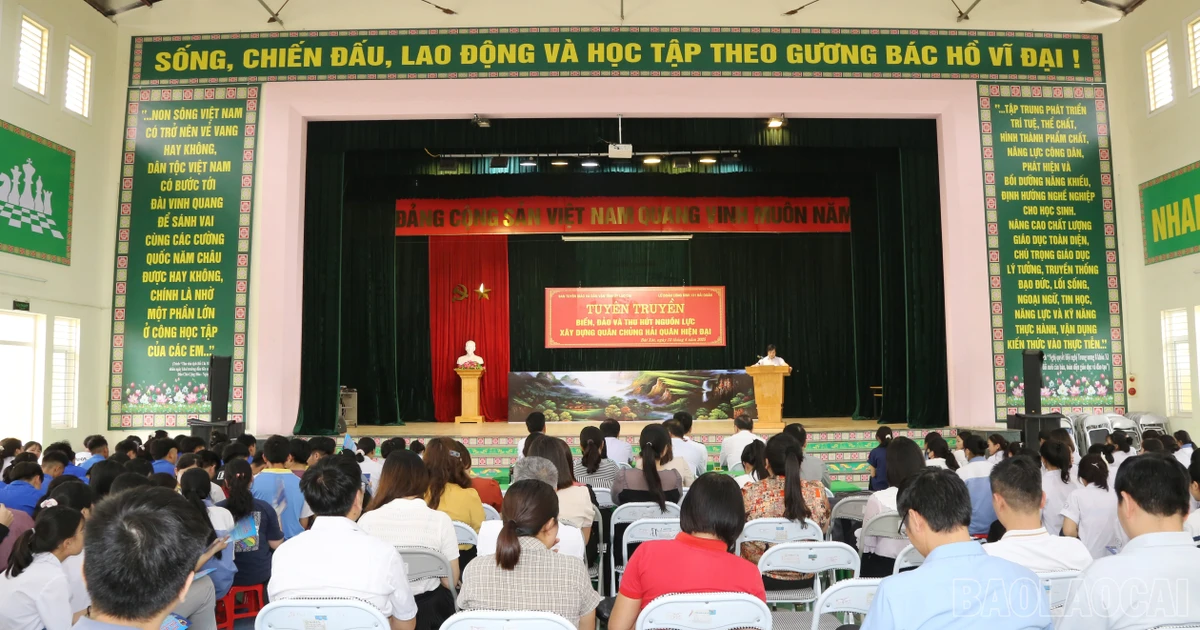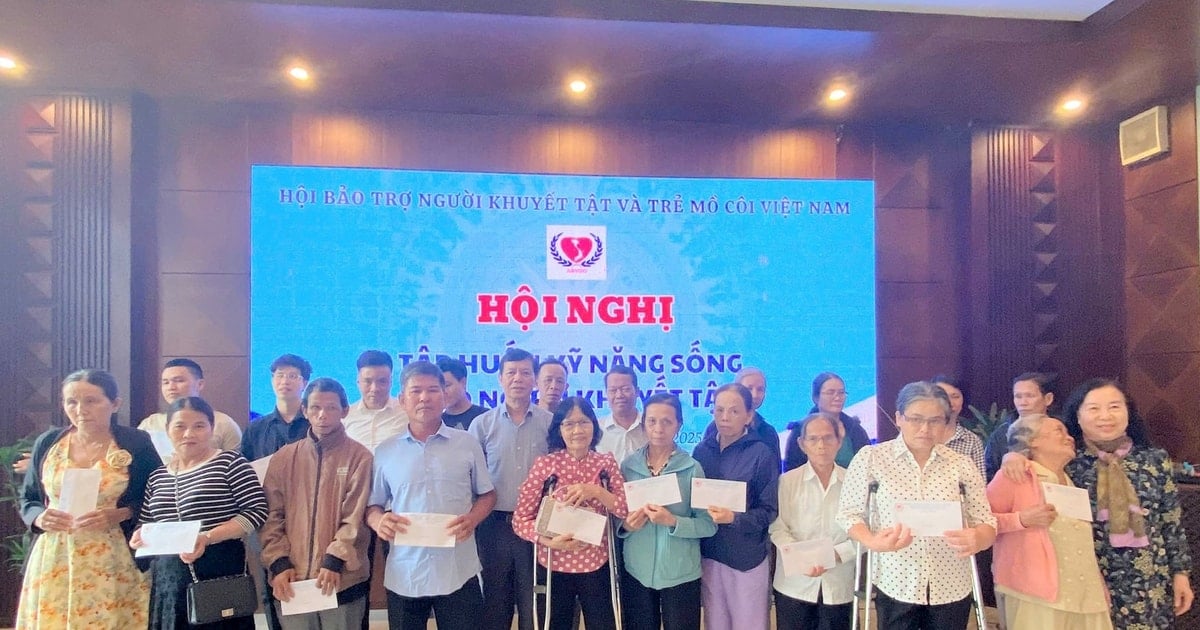 |
By the end of February 2025, the 5G coverage rate for people was 25.5%, the number of 5G BTS stations had not reached 10% compared to the current number of 4G BTS stations. Photo: MH . |
Circular 02 detailing the "Radio frequency channel allocation planning for Fixed services in the 71 - 76 GHz and 81 - 86 GHz bands" has just been issued by the Ministry of Science and Technology.
Effective from May 15, the Circular applies to organizations and individuals participating in the management and use of radio frequencies; organizations and individuals manufacturing, importing, and trading radio equipment for use in Vietnam.
The planning aims to establish order in the use of radio frequency channels, unify applicable standards, ensure reasonable, effective and economical management and use of radio frequencies to meet the demand for high-speed radio transmission in the 71 - 76 GHz and 81 - 86 GHz bands.
A representative of the Radio Frequency Department (Ministry of Science and Technology) said: The issuance of Circular 02 is an important step to complete the legal corridor for the use of E-band in Vietnam, creating a favorable foundation for the deployment of ultra-high-speed transmission infrastructure - an essential component for the development of 5G networks nationwide, thereby contributing to building a solid "highway" for Vietnam's 5G infrastructure.
Previously, in 2024, for the first time in 15 years since the Law on Radio Frequency was promulgated, the right to use the 2600 MHz and 3700 MHz frequency bands for 5G was successfully auctioned, increasing the amount of spectrum granted to mobile information by 88% compared to before (300 MHz).
This paved the way for 5G to be officially commercialized in Vietnam, helping to increase Vietnam's mobile broadband speed by 15 levels, while also earning VND12,697 billion for the state budget. This is considered a breakthrough in radio frequency management, shifting from purely technical management to economic-technical management.
The 5G network is identified as an important component of the national digital infrastructure, the foundation for digital transformation, digital economic development and digital society, so it must be invested in and developed one step ahead. The goal set for this year is to cover 5G nationwide, striving for the number of 5G stations to reach 50% of the number of 4G stations.
In fact, in October 2024, December 2024 and March 2025, the three major network operators Viettel, VinaPhone and MobiFone officially provided 5G mobile telecommunications services.
However, by the end of February 2025, the 5G coverage rate for the population was 25.5%; the number of 5G BTS stations had not reached 10% compared to the current number of 4G BTS stations. Enterprises do not have a clear plan for the rapid deployment of 5G BTS, leading to the risk of not achieving the set goals.
To encourage telecommunications enterprises to quickly deploy 5G network infrastructure nationwide, the Ministry of Information and Communications (now the Ministry of Science and Technology) has researched and proposed a financial support policy for network operators to achieve at least 20,000 5G transmission stations that are accepted and put into use from February 19, 2025 to December 31, 2025, in Resolution 193 dated February 19, 2025 of the National Assembly.
At the first meeting of the Government's Steering Committee on Science, Technology, Innovation, Digital Transformation and Project 06 held on March 18, the Ministry of Science and Technology said that two enterprises, Viettel and VNPT, plan to deploy at least 20,000 5G BTS stations in 2025 to enjoy the support mechanism for rapid 5G development.
Source: https://znews.vn/mo-duong-cao-toc-truyen-dan-cho-ha-tang-5g-viet-nam-post1543248.html



![[Photo] Closing of the 11th Conference of the 13th Central Committee of the Communist Party of Vietnam](https://vstatic.vietnam.vn/vietnam/resource/IMAGE/2025/4/12/114b57fe6e9b4814a5ddfacf6dfe5b7f)

![[Photo] Overcoming all difficulties, speeding up construction progress of Hoa Binh Hydropower Plant Expansion Project](https://vstatic.vietnam.vn/vietnam/resource/IMAGE/2025/4/12/bff04b551e98484c84d74c8faa3526e0)





















































































Comment (0)